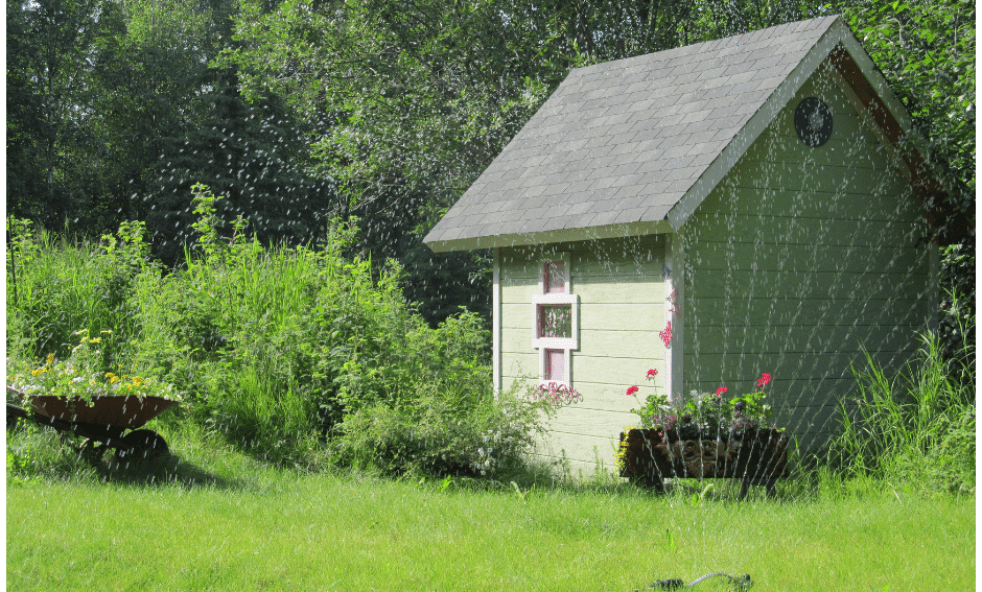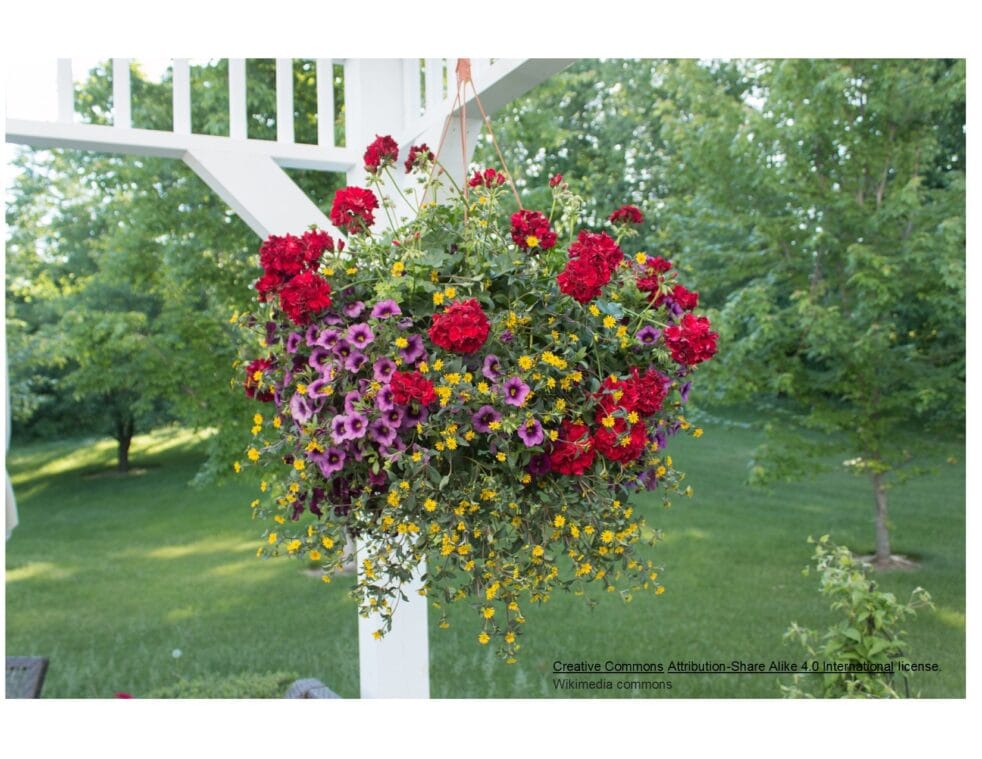
For beautiful flowers, this money-saving tip will breathe new life into last year’s hanging basket. It’s no secret that compost revives old soil and provides healthy nutrients that feed your plants naturally.
Most of us plant our flowers in containers or baskets that have had the same potting soil for years. If you’ve used the same old dirt year after year, it’s probably low or completely devoid of nutrients. Important nutrients your flowers thrive upon are consumed by the plant and leach out through watering. After a few summers, you may be in the habit of just throwing the old stuff away and buying new. But you don’t have to do that, especially if you’re gardening on a budget!
Compost revives old soil
Bags of potting soil are getting expensive. Some brands contain added industrial fertilizers. For a lot less money, you’re better off to buy a couple of bags of good quality compost. Remove part of the dirt in your pots and replace with a 1/4″-1/2″ layer of compost. You can also mix compost into your potting soil, but only add it to plain potting soil without added fertilizer.
The benefit? Compost retains moisture so you won’t have to water as often. That’s less work! You’ll save money by not buying fertilizer as well because the compost feeds your plants, naturally. Everyone will notice the difference and your flowers will thank you!
How compost works
Just as good nutrition is important to our human bodies, your plants need to ‘eat’ well, too. Quality compost delivers the perfect pH balance, microbes and healthy bacteria to enhance their performance. Do you want your hanging baskets producing a non-stop array of gorgeous flowers all through the summer? Then, feed them right! Good healthy soil makes a huge difference in the vigor and beauty of your baskets and planters.

I like to use a rich, humified compost that is certified organic. Because I don’t understand all the scientific jargon of these processes, here’s a summary in laymen’s terms. Typically, most composts contain things like manure, hay, straw and wood chips. These have the beneficial microbes found in nature. Minerals work in conjunction to give helpful bacterial what it needs to in-turn promote plant growth.
Why compost is better than chemical fertilizers
You may not realize that natural compost is– in and of itself–, a plant ‘fertilizer’. Yet everything a chemical fertilizer attempts to duplicate is here. Everything and more!
Commercial fertilizers and other chemical additives actually damage soil. Believe it or not, they actually make soil less fertile over time. When the soil is less fertile, we tend to compensate by using more fertilizer.
Chemical fertilizers are hard on soil destroying the very microbes that make soil fertile in the first place. Over time, they cause acidification (low pH) because of a decrease in organic matter.
By contrast, the natural process of decay (the breaking down of organic substances such as leaves, wood, feathers, bone) creates the high carbon/nitrogen exchange that plants require to really excel. A healthy woodland fern feeds on the bacteria in decay. So do trees and wild berries. They also love manure. For instance, I remember picking low bush cranberries (lingonberries) with my Mom in late summer/early Fall. Time and time again, the largest, plumpest, ripest berries grew right next a pile of moose poop. Or rabbit turds.
But it’s the exact same process playing out. Essentially, the stuff in compost–the bacteria that makes the decay process work–pulls nitrogen from the air into the soil web so the plants can utilize it.
If you’re fascinated by all this, you might be interested in the book: “Teaming With Microbes” by Jeff Lowenfels. It’s highly revered and has received many accolades. Between the pages, you’ll find a down-to-earth presentation of organic gardening, and understanding the science behind soil nutrients and healthy flowers and vegetables.
Where to find good quality compost

Forget the box stores. Most higher grade gardening supplies (and knowledge) are found at one of your local nurseries. Additionally, you might even have someone in your area who produces it and sells it to the greenhouses. I always recommend buying local as much as possible.
The product I use is made by Alaska Humified Compost. It’s wonderful stuff. I’m including the link here for local readers. They sell it directly to several well known greenhouses in Anchorage and the Mat-Su Valley. (and elsewhere, I’m sure) You can check their web page or call them to find out where to get it in your part of the state.
Home composting is a growing trend as well. You can learn to make your own by starting a compost bin and composting things like banana peels, coffee grounds, lawn clippings, leaves, etc.
In Conclusion
I’m excited about going organic this year and hope you’re convinced to give it a try, too! Here are some compelling reasons:
- Compost revives old soil
- Save money. It costs considerably less than buying all new potting soil.
- Have you already planted your hanging baskets? No problem! Compost is easy to add to your existing planters. Just throw a handful or two right on the surface.
This summer, why not experiment and see if you notice the difference it makes. Hold back on the fertilizer mix so you don’t overdue it or destroy the work the compost is doing naturally to deliver the results you and your flowers will love.
If this was helpful, I hope you’ll share this post with a friend and join our little art and garden community. Scroll down just a bit to sign up for our monthly newsletter. No weeds (or spam). Just enjoyable, ad-free garden and art content. Have a great summer and happy gardening. Thanks for visiting!
Related posts you may enjoy
How to plant window boxes that envy
Easiest perennials to grow for Zone 3

